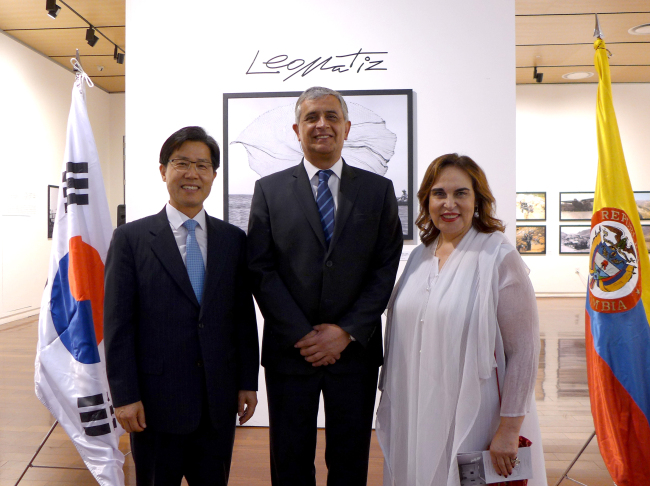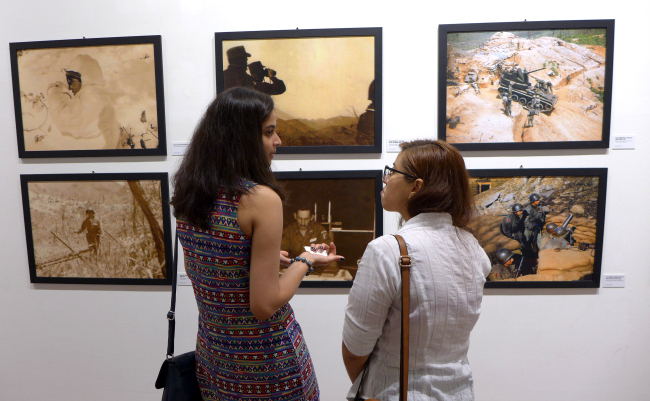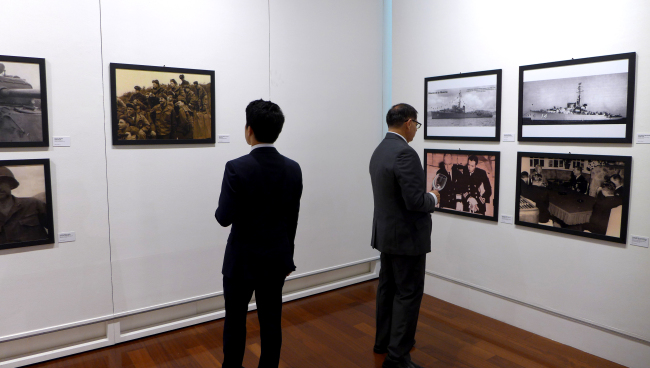A photo exhibition at the Korea Foundation Gallery in Seoul is revealing forgotten images of the past captured through the eyes of Colombians.
Titled “Colombian Caribbean by Leo Matiz and Colombia in the Korean War,” the exhibition vividly illustrates the ties that bind the two countries, whose relationship was forged in blood and whose bond now prospers in the arts and culture.
Twenty-five photographs by world-renowned Colombian artist Leo Matiz shed light on the Latin American country from the mid to late 20th century, depicting serene landscapes as well as industrious lives.

“We celebrate today the universal legacy of a visionary artist, considered one of the greatest photographers of the 20th century and an epic creator who built a deeply human and moving vision of Latin America and the world,” Alejandra Matiz, the daughter of Leo Matiz and president of the Leo Matiz Foundation said in a speech.
Leo Matiz was born in 1917 in Aracataca, Colombia, a tropical backwater region along the banks of the Magdalena River, which is also the birthplace of legendary Colombian writer Gabriel Garcia Marquez.
From a young age, he travelled around his country and the world to capture in images the energy and emotions of people and places. His famed works include intimate pictures of Mexican painters Frida Kahlo and Diego Rivera on their wedding day, as well as the Bogotazo riots in the Colombian capital in 1948.
Also as a painter, caricaturist and a founder of newspapers and art galleries, Matiz’s passion focused on the pursuit of analog aesthetics. He died in Bogota on Oct. 24, 1998.

The second section of the exhibition displays photographs by Colombian soldiers of the Korean War (1950-53), which came to be known as “the forgotten war.” Some 4,314 troops of the Colombian Army Infantry Battalion No. 1 and a naval unit under the Frigate Almirante Padilla fought alongside the United Nations Forces, with 213 killed in action, 448 wounded and 28 captured as prisoners of war.
“It is great honor that Colombia responded to the call of the United Nations to defend Korea from communist attack,” Colombian Ambassador Tito Saul Pinilla said in a speech at the opening ceremony on Tuesday. “When we look at Korea’s growth and development over the past 60 years, we feel that our sacrifice was not in vain.”
The event runs until Aug. 3 and is free.
By Joel Lee (Joel Lee / The Korea Herald)

-
Articles by Korea Herald










![[Hello India] Hyundai Motor vows to boost 'clean mobility' in India](http://res.heraldm.com/phpwas/restmb_idxmake.php?idx=644&simg=/content/image/2024/04/25/20240425050672_0.jpg&u=)








